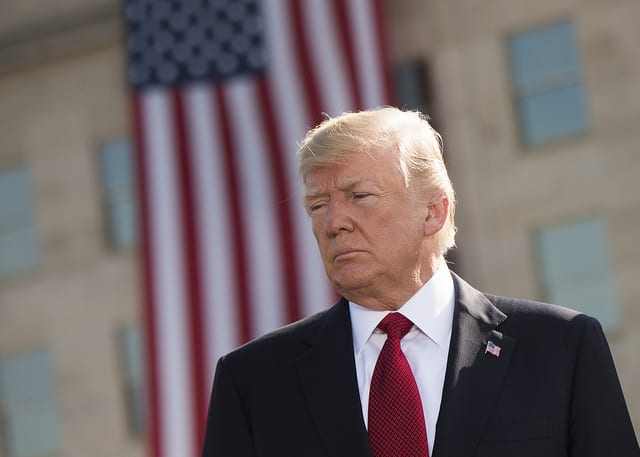The ACLU say the brief, unsigned order is only a provision, representing more of a temporary setback than a permanent defeat.
The Supreme Court is paving the way for the Trump administration’s crackdown on immigration, refusing to rule on policy that bars most Central Americans from seeking asylum in the United States.
The justices’ decision effectively reinstates the Trump administration’s ‘safe third country’ policy. Under its purview, migrants fleeing persecution must apply for asylum elsewhere if they passed through another nation en route to the United States. According to Vox.com, that means ‘asylum seekers from any country but Mexico will not be ineligible for asylum if they show up at the southern border.’
Technically, the rule’s only supposed to apply to migrants who pass through safe countries. But the administration’s definition of ‘safe’ is up for debate—it includes Mexico on its list of approved territories for asylum-seekers, despite its high crime rates.
One way or another, the Supreme Court didn’t offer any perspective on the rule’s legality. Instead, the justices issued a brief, unsigned order allowing the administration to enact its order as lower courts sort through a slew of lawsuits.
Justice Sonia Sotomayor—joined by Justice Ruth Bader Ginsburg—dissented, saying the court’s action “upend[s] longstanding practices regarding refugees who seek shelter from persecution.”
The ‘safe third country rule,’ notes The New York Times, reverses decades of policy and precedent. For decades, migrants have been able to seek safe haven within the United States no matter how they arrived at its borders. Furthermore, a federal appeals court have even blocked the rule’s implementation.
….The Southern Border is becoming very strong despite the obstruction by Democrats not agreeing to do anything on Loopholes or Asylum!
— Donald J. Trump (@realDonaldTrump) September 12, 2019
Despite the setbacks, Lee Gelernt—an attorney with the American Civil Liberties Union, is pushing back against the policy—emphasized that the justices’ decision was provisional.
“This is just a temporary step,” Gelernt said, “and we’re hopeful that we’ll prevail at the end of the day. The lives of thousands of families are at stake.”
The New York Times suggests that the case will ‘almost certainly return to the Supreme Court,’ although it’ll likely take months to get there.
In the meantime, the administration has been busy touting its victory. Acting U.S. Citizenship and Immigration Services Director Kenneth T. Cuccinelli promised to “commence implementing the asylum rule ASAP.”
“While congress continues to do nothing,” Cuccinelli wrote on Twitter, “@realDonaldTrump’s administration uses every tool in the toolbox to try and solve the crisis at our southern border.”
Doris Meissner, a senior fellow at the Migration Policy Institute, told the Washington Post that it seems the Trump administration is moving big and acting bold.
“This is a big deal,” Meissner said. “Its broad purpose is to further reduce and eliminate the ability to apply in the United States for asylum. For people that have serious claims for asylum, their only practical alternative is filing in Mexico.”
However, other experts—like immigration attorney Kara Lynum—told the Post it’s not likely restrictive rules will do much to deter immigration.
“I don’t know that this will have a deterrent effect because the conditions that caused people to migrate still exist, and they’ve not been given a better option,” she said. “People are going to go into more remote places and more dangerous situations to reach the United States.”
Sources
The Supreme Court has delivered a devastating blow to the US asylum system
Supreme Court Says Trump Can Bar Asylum Seekers While Legal Fight Continues
Trump administration ready to deport, turn back more asylum seekers after Supreme Court ruling


Join the conversation!